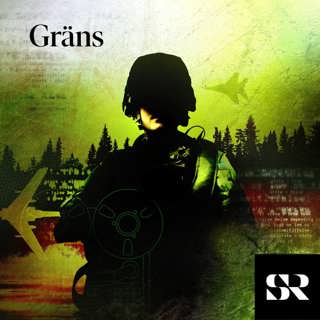
The Sunday Read: 'The Iceman in Winter'
He was Batman. He was Iceman. Until he wasn’t. So what happened to Val Kilmer?In this weird, dark time, Taffy Brodesser-Akner tells a story about how sometimes, in the end, everything is different but everything is good.This story was recorded by Audm. To hear more audio stories from publishers like The New York Times, download Audm for iPhone or Android. Subscribe today at nytimes.com/podcasts or on Apple Podcasts and Spotify. You can also subscribe via your favorite podcast app here https://www.nytimes.com/activate-access/audio?source=podcatcher. For more podcasts and narrated articles, download The New York Times app at nytimes.com/app.
10 Maj 202051min

'Rabbit Hole,' Episode 4: Headquarters
Note: This episode contains strong language. Today, we’re sharing Episode 4 of “Rabbit Hole,” a New York Times audio series with the tech columnist Kevin Roose. In this episode, our reporter interviews the woman running the world’s largest and most influential video empire: Susan Wojcicki, the chief executive of YouTube. "If you're tuning in to "Rabbit Hole" for the first time, start with the prologue. You can find more information about the podcast at nytimes.com/rabbithole. Subscribe today at nytimes.com/podcasts or on Apple Podcasts and Spotify. You can also subscribe via your favorite podcast app here https://www.nytimes.com/activate-access/audio?source=podcatcher. For more podcasts and narrated articles, download The New York Times app at nytimes.com/app.
9 Maj 202039min

A Bit of Relief: Rick Steves' Travel Dreams
Rick Steves is a travel evangelist, always in motion, traversing faraway places and inspiring others to do the same. So when the world shuts down, and Rick Steves can no longer travel, then who is Rick Steves?Sam Anderson, a writer for The Times Magazine, profiled the travel guru last year. Today, Sam asks Rick how he’s been expanding his horizons from home. Dreaming of travel, we learn, is nearly as sweet as the real thing. Subscribe today at nytimes.com/podcasts or on Apple Podcasts and Spotify. You can also subscribe via your favorite podcast app here https://www.nytimes.com/activate-access/audio?source=podcatcher. For more podcasts and narrated articles, download The New York Times app at nytimes.com/app.
8 Maj 202016min

The Arrival of the ‘Murder Hornet’
It came to the United States from Asia and first appeared in Washington State. The country was slow to recognize it. Deaths mounted as it circulated for weeks undetected. And now, if it’s not stopped, it could reshape populations and industries across the country. Today, we discuss the arrival of the Asian giant hornet. Guest: Mike Baker, a Pacific Northwest correspondent for The New York Times who spoke with Ted McFall, a beekeeper in Washington State. For more information on today’s episode, visit nytimes.com/thedaily. Background reading: The Asian giant hornet can kill humans with its stings. It also decapitates bees methodically. If the hornets spread across the United States and devastate bee populations, which we depend on for one out of every three bites of food we eat, our food supply could be threatened.Although the Asian giant hornet kills honeybees in their hives, some bees have developed a remarkable defense: cooking the hornets alive. Subscribe today at nytimes.com/podcasts or on Apple Podcasts and Spotify. You can also subscribe via your favorite podcast app here https://www.nytimes.com/activate-access/audio?source=podcatcher. For more podcasts and narrated articles, download The New York Times app at nytimes.com/app.
8 Maj 202027min

The Chinese Lab Theory
Everyone wants to know where the coronavirus came from. In the absence of a clear explanation, several theories are circulating — including one, pushed by the Trump administration, that the pandemic started because of malpractice in a lab in Wuhan, China. But is that a secret the Chinese government is keeping, or a mystery no one knows the answer to? Guest: Julian E. Barnes, who covers national security for The New York Times. For more information on today’s episode, visit nytimes.com/thedaily. Background reading: Leaders in the intelligence community have said there is no indication the virus is man-made, but have yet to reach a conclusion on its origins. While many scientists say the virus most likely made the leap from an animal to a human in southern China, Secretary of State Mike Pompeo and President Trump continue to link the outbreak to a government lab.Some national security analysts are worried that pressure from senior Trump administration officials could distort assessments about the origin of the coronavirus and be used as a weapon in an escalating battle with China. Subscribe today at nytimes.com/podcasts or on Apple Podcasts and Spotify. You can also subscribe via your favorite podcast app here https://www.nytimes.com/activate-access/audio?source=podcatcher. For more podcasts and narrated articles, download The New York Times app at nytimes.com/app.
7 Maj 202021min

A Socially Distanced Senate
The congressional doctor expressed reservations about whether it was safe for the House and Senate to reconvene. Instead, only senators have returned to Capitol Hill, bringing our new normal — elbow bumps, masks and sanitizer — with them. So why was one chamber so determined to portray its members as essential workers in the pandemic? Guest: Nicholas Fandos, who covers Congress for The New York Times. For more information on today’s episode, visit nytimes.com/thedaily. Background reading: With the Senate back in session, masked lawmakers, hushed corridors and socially distanced news conferences and hearings gave an eerie feel to the Capitol Hill routine.The confirmation hearing for Representative John Ratcliffe, the president’s pick to lead the nation’s intelligence agencies, was the first to employ social distancing rules for senators since the coronavirus pandemic took hold. Subscribe today at nytimes.com/podcasts or on Apple Podcasts and Spotify. You can also subscribe via your favorite podcast app here https://www.nytimes.com/activate-access/audio?source=podcatcher. For more podcasts and narrated articles, download The New York Times app at nytimes.com/app.
6 Maj 202023min

Bursting the College Bubble
Universities across the United States have long prided themselves on bridging the differences between their students. How the coronavirus has instead reinforced inequalities that campus life can hide. Guest: Nicholas Casey, a national politics reporter at The New York Times, who spoke to faculty and students at Haverford College, a liberal arts school near Philadelphia. For more information on today’s episode, visit nytimes.com/thedaily. Background reading: When the students were sleeping in the same dorms and eating the same dining hall food, the disparities in their backgrounds weren’t as clear as they are over video chat. Here’s a peek inside two students’ vastly different worlds. Subscribe today at nytimes.com/podcasts or on Apple Podcasts and Spotify. You can also subscribe via your favorite podcast app here https://www.nytimes.com/activate-access/audio?source=podcatcher. For more podcasts and narrated articles, download The New York Times app at nytimes.com/app.
5 Maj 202025min

One Meat Plant. One Thousand Infections.
One of the largest coronavirus outbreaks in the United States has been inside the Smithfield pork factory in Sioux Falls, S.D. Today, we speak with a worker at the plant, a refugee who survived civil war and malaria only to find her life and livelihood threatened anew. Guests: Caitlin Dickerson, who covers immigration for The New York Times, spoke with Achut Deng, a Sudanese refugee who works at Smithfield. For more information on today’s episode, visit nytimes.com/thedaily. Background reading: Refugees from around the world worked at the Smithfield pork factory. Now they face mounting illness and the sudden loss of their jobs. Subscribe today at nytimes.com/podcasts or on Apple Podcasts and Spotify. You can also subscribe via your favorite podcast app here https://www.nytimes.com/activate-access/audio?source=podcatcher. For more podcasts and narrated articles, download The New York Times app at nytimes.com/app.
4 Maj 202029min






















